Lighting design plays a pivotal role in shaping both the atmosphere and functionality of any space. More than a practical necessity, thoughtful lighting influences how a room feels. When natural and artificial light are carefully considered, interiors become intentional, distinct and beautiful. Here, designers Suzanne Kasler, Lisa McDennon and Nina Magon reveal lighting strategies to give rooms a sense of identity, the rules to swear by and all the insights you need to craft a lighting plan of your own.
This piece is part of LUXE’s Visionaries program celebrating our 20th anniversary. Stay tuned as we explore the “Story of Home” through the voices of leading experts and brands, culminating in our November/December 2025 anniversary issue.
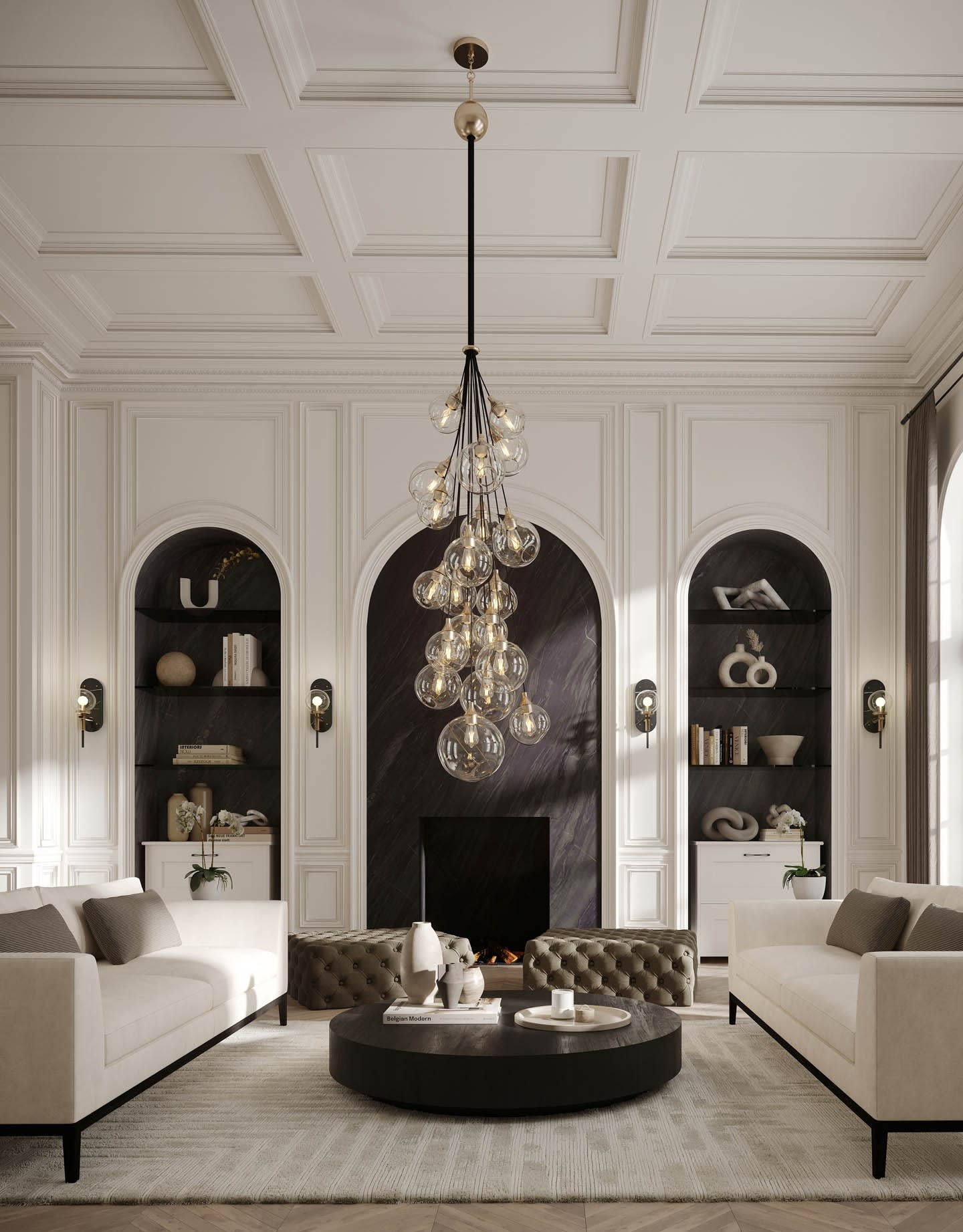
This chic living area is topped by designer Lisa McDennon's Skye chandelier. The fireplace and matching arched niches are flanked by Gilda sconces, also conceived by McDennon, with Nero Marquina marble backplates. Both fixtures are part of her traditional-meets-contemporary collection with Hinkley.
Set The Tone With Lighting
Designers use lighting to define ambience. While foundational elements like color are decided early on, lighting tends to come later in the design process, as the finishing touch to a room. This doesn't mean it should be an afterthought, though. "As designers, we now have to consider lighting as part of the furniture—integrating it into the ceiling, walls and architectural details to enhance form and function," shares designer Suzanne Kasler, whose collection with Visual Comfort & Co. showcases her sophisticated, tailored style. This elegant Palm Beach home by Kasler features a blend of fixtures that imbue the abode with contemporary flair. The bedroom's clean-lined table lamp plays off the materiality of the chandelier, evoking a sense of sophistication.
No matter the aesthetic, designer Lisa McDennon (check out her traditional-meets-contemporary collection with Hinkley here) begins with a tried-and-true framework to set the stage. "My approach to creating a particular mood for a space is to use a specific combination of colors, movement and light," she says. In the living area shown here, McDennon embedded architectural lighting into the ceiling and flanked the reading nook with sculptural sconces to add a cozy vibe. The result is an example of McDennon's multipoint concept: layer in various points of light throughout, from architectural lighting and portable options to accent pieces and more.
"Lighting is one of the most powerful tools for shaping mood," designer Nina Magon notes. (Explore her dreamy collection with Studio M Lighting here.) Thus, she considers the everyday function of a space in addition to its intended style. "I often select a bold statement fixture to anchor the space and pair it with dimmable layers to allow the tone to shift throughout the day," she explains. In the South Carolina residence featured below, she used clean-lined pendants that emit a soft glow to create intimacy without overpowering the room’s minimalist aesthetic.
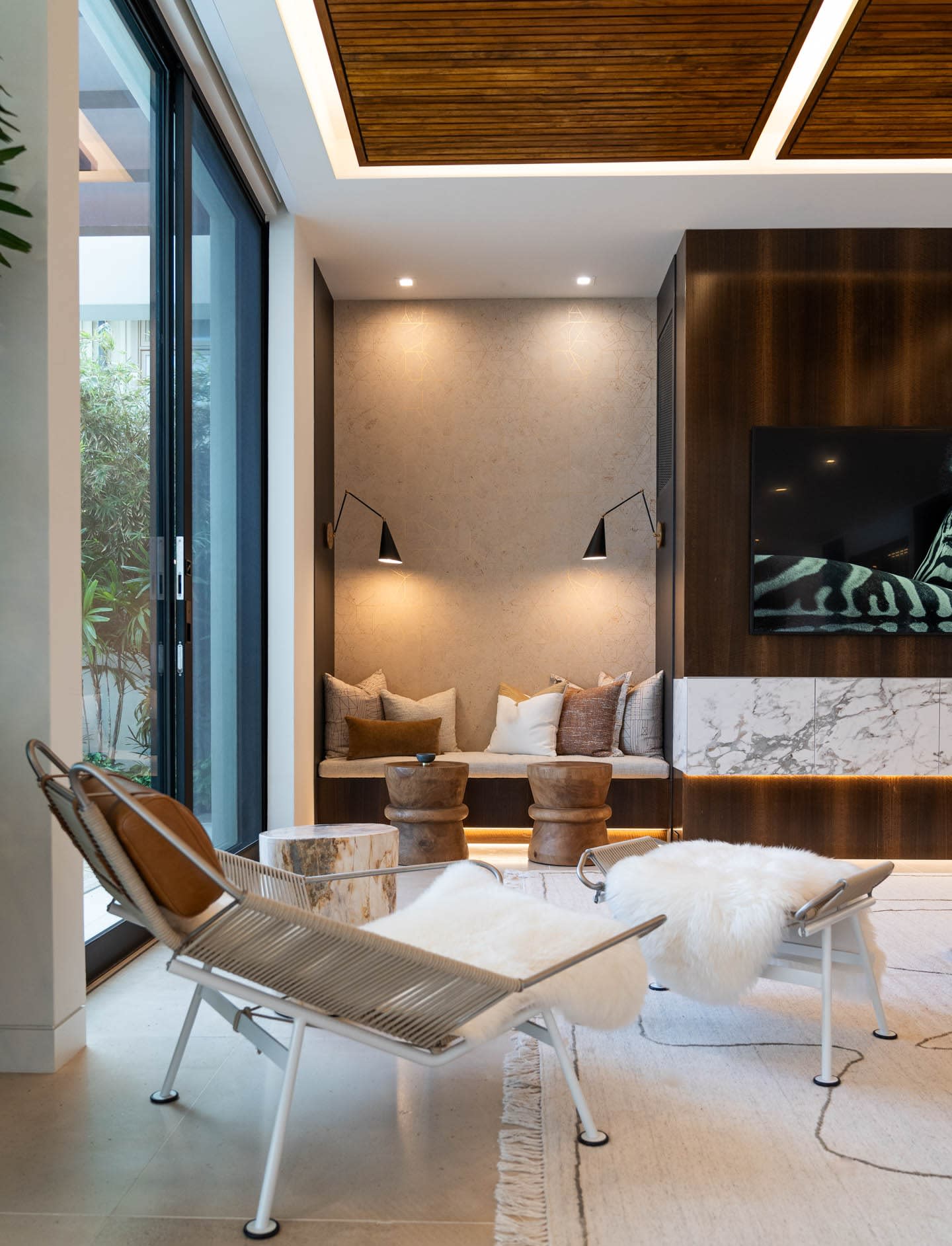
The inviting reading nook in this McDennon-designed living area is lit by a pair of geometric sconces.
"Good lighting is about balance, but great lighting dares to surprise."
- Nina Magon

"We maintained a consistent language of warm tones and sculptural shapes, which allowed each space to feel distinct yet deeply connected," designer Nina Magon says of this South Carolina residence. In the primary suite, shapely pendants frame the bed.
How To Light Different Spaces
With seemingly endless options, where does one even begin when curating a lighting plan? According to Kasler, it can often come down to the primary function of the space. In bedrooms, for instance, she might layer soft lighting through pieces that act as accessories, such as lamps or sconces. In contrast, the designer may go bolder in dining areas with statement fixtures like chandeliers. "When lighting is selected with the same care as the furnishings, it elevates the entire space," she describes. Take the layered collection of lighting in the Kasler-designed family room featured here: a turquoise Joseph Konrad lamp provides a subtle light source from the side table, while a Paul Ferrante chandelier illuminates the space from above. Call it a multifunctional moment.
McDennon echoes the sentiment, "To create softness and romance in a bedroom, I look for fixtures that can provide light that is dappled or offers a gentle glow." When it comes to gathering zones like dining areas, she can evoke the same feel using a different solution. "If I want to produce a similar softness and romance in a dining room, I’ll still look for an obscured fixture, but I’ll also make sure the downlight gives the table adequate illumination," McDennon says. Think about your space's purpose and the ideal mood to make a top-tier lighting plan.
Although different areas might require different methods, they need not feel disparate. "Lighting is a key connector between rooms," Magon shares. Create a sense of flow throughout your home with the details. "We use [lighting] to echo materials or lines found elsewhere in the home, often repeating a finish or form in different applications," she continues. Think: similar shapes, materials or patterns. In this Houston oasis designed by Magon, light and texture intersect to form a dreamy, monochromatic abode.
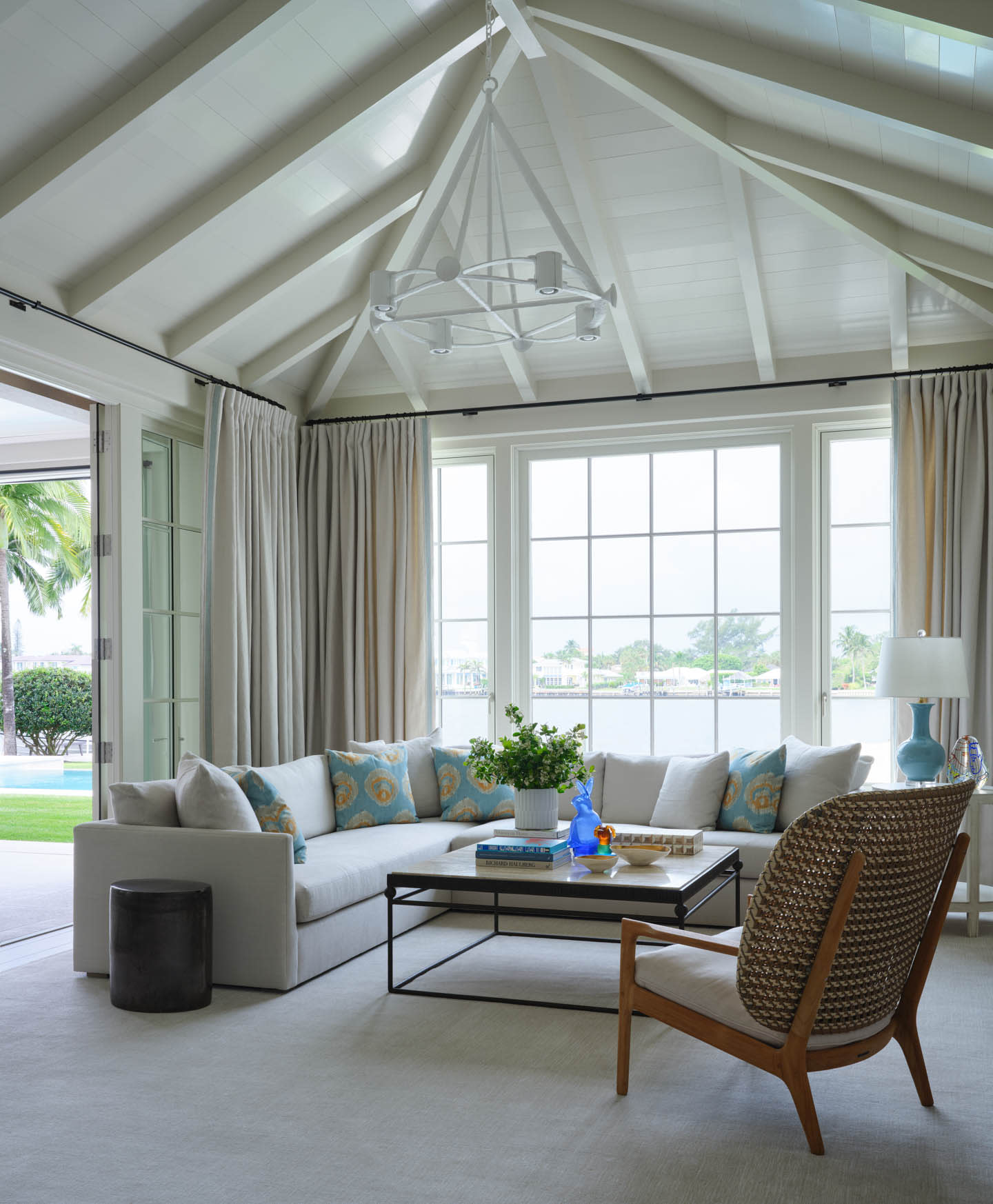
In the family room of this Palm Beach oasis by designer Suzanne Kasler, a Paul Ferrante chandelier and Joseph Konrad lamp introduce lighting at different levels.
"My approach to creating a particular mood for a space is to use a specific combination of colors, movement and light."
- Lisa McDennon
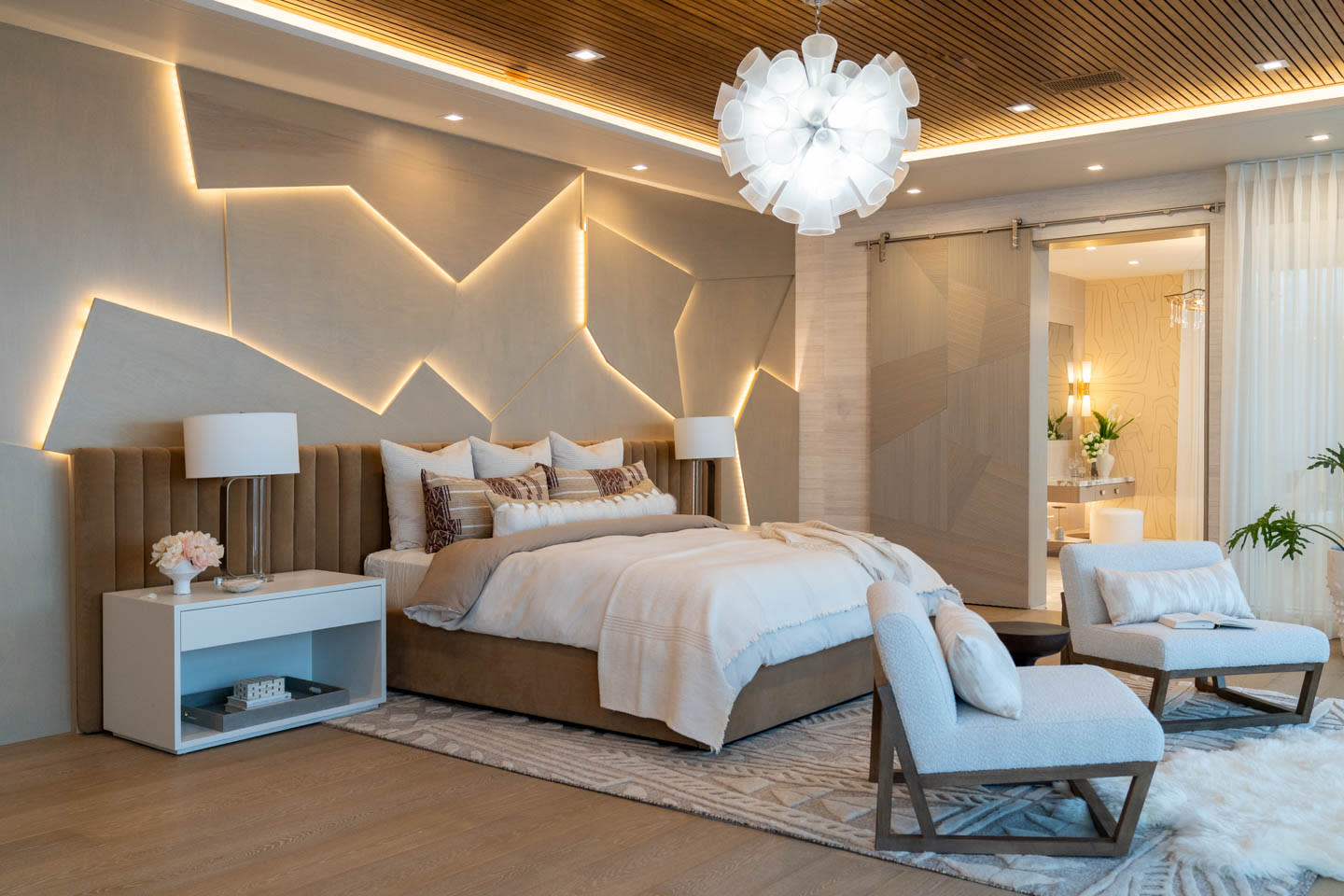
This Oahu, Hawaii, bedroom by Lisa McDennon Design plays with sculptural lighting trends via its LED graphic wood wall.
Lighting Rules To Live By
1. Layer Your Light Sources
Every space needs layered lighting at varying heights. "What I often find is that people do not include enough lamps in a room," Kasler notes. "I would rather have more lamps, decorative fixtures and sconces than downlighting." Layering sources allows the light to shift more naturally throughout the day; turn on the overhead when completing tasks, then switch to lamplight for your evening read.
2. Avoid The "Big Light" When Possible
Nothing is worse than a large, flat light when you're trying to wind down. "I like to limit overhead can lights unless it’s a hardworking space like a kitchen or closet," Kasler explains. Save those fixtures for practical areas.
3. Do It For The Drama
Magon shares that sometimes, it's OK to break the rules to make a statement. This might mean dramatically scaling up a fixture in a small space to create unexpected tension or opting for the sculptural piece you've been eyeing. "Lighting should enhance, not overpower," she adds. So, get the right light to meet your needs, but don't be afraid to play. In the end, it's all about making the space your own. "Good lighting is about balance, but great lighting dares to surprise," Magon says.
4. Dimmers Are A Must
Designers agree, dimmers are crucial. "My top lighting rule is to maintain control and flexibility," McDennon shares. The best way to achieve that? Give yourself (and guests) the power and ease to adjust illumination through dimmers.
No matter your style, consider the words of Kasler when starting your own lighting plan, "Timeless design begins with a strong foundation." Bright ideas await.
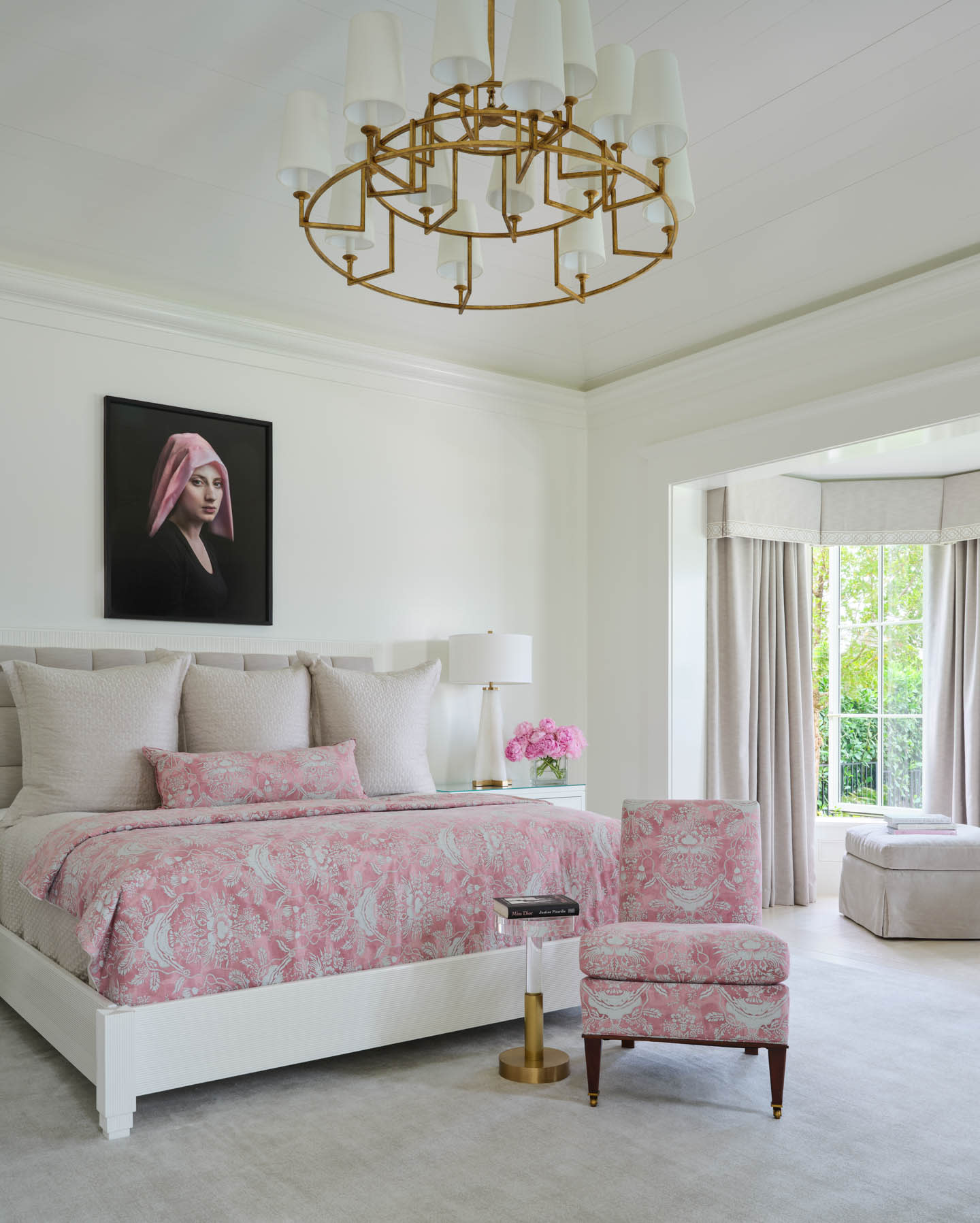
In this Palm Beach retreat by Kasler, the primary bedroom’s Hendrik Kerstens portrait coordinates with Groves Bros.’ Lorraine fabric on the bedding, alongside a sleek lamp and showstopping chandelier.
Special thanks to our Visionaries partners for celebrating 20 years with LUXE: 210 Design House, ADRIANA HOYOS, AjMadison, ALG Fine Art, American Screen Solutions, Amy Storm & Company, Anees Furniture, Anthony's Patio, AquaTerra Outdoors, Architectural Grille, Assure Interiors, Bailey Vermillion Interiors, Beth Krupa Interiors, Blair Burton Interiors, BSH Experience & Design Center Houston, California Closets, Candelaria Design Associates, CCS Interior Design Group, Chad Renfro Design, Chalet, Chic Design Group, Closet Factory Austin, Coastal Homes, Cohen & Hacker Architects, Collective Design, Cooper Pacific Kitchens, D'Amore Interiors, Dan Luna Woodworking, Design by Maya K, Designs By Sundown, Designscapes Colorado, Drewett Works, Eichholtz, Ellen Grasso & Sons, Encore Stone Studio, Escobedo Group, Fabricut, Farmhouse Stone, Gossett & Co., Herbst Construction Inc., Hinkley, Interiors by Maite Granda, Iraj Taghi Custom Homes, Ivette Arango Interiors, Jacobs + Interiors, Jennifer Martinez Interiors, Jessica Hasten Design, Jobe Corral Architects, JT Finneran, Kasey McCarty Interior Design Studio, Kat Black Interiors, Kelly Architects, King Living, Lemburg House, Lemmons Remodeling, Living Design Studios, LTD Builders, Martha Dayton Design, Massey Associates Architects, MK Construction & Builders, Inc., Morgante Wilson Architects, Moya Living, NR Interiors, Omnio Home Concierge, Orange Coast Interior Design, Pacific Hardwood Flooring, Paula McDonald Design Build & Interiors, Payton Addison, Pittet Architecturals, Pure Design House, r:Home, RPGA Design Group, SCH Homes, Sensi Casa, Sharif & Munir Homes, SilverLining, SKJ Interiors, Studio Celeste, Tate Studio Architects, The Design Coach, LLC, The Luxury Bed Collection, von Weise Associates, Walker Zanger, Ward Jewell Architect, AIA and Wolk Design Associates.